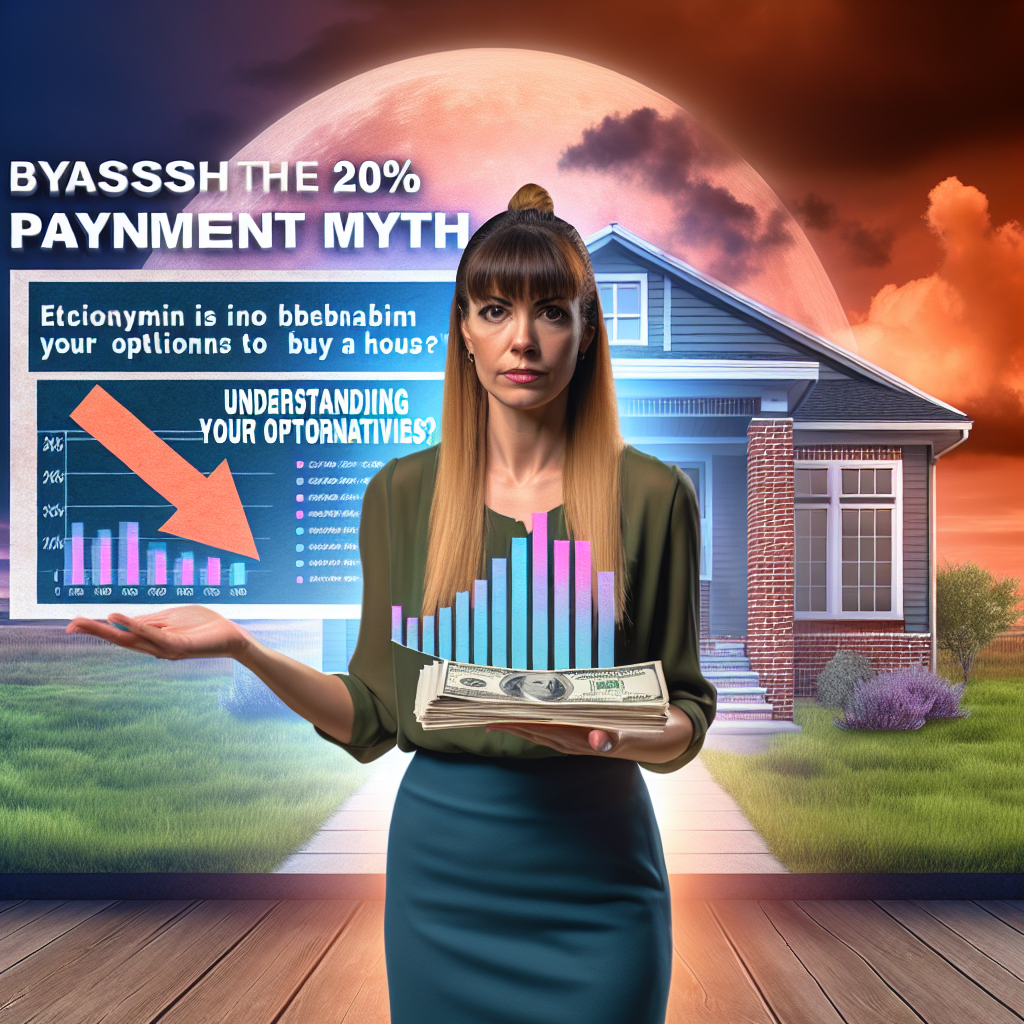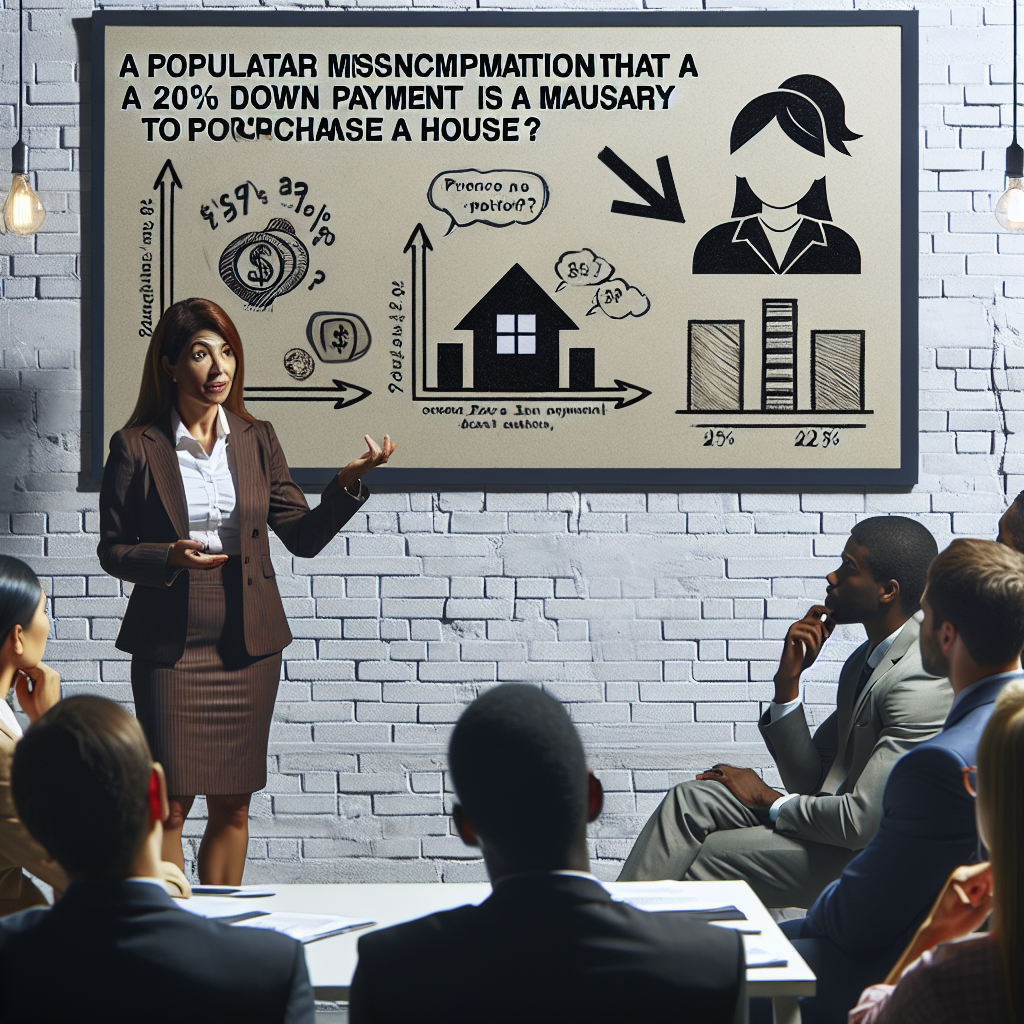-
Table of Contents
- Economist Debunks Myth: 20% Down Payment Not Necessary to Buy a Home – Here’s What You Need
- The Origin of the 20% Down Payment Myth
- Modern Mortgage Options: Breaking Down the Barriers
- Case Studies: Real-Life Examples
- Case Study 1: The First-Time Homebuyer
- Case Study 2: The Veteran
- Case Study 3: The Rural Homebuyer
- The Role of Private Mortgage Insurance (PMI)
- Financial Planning: Preparing for Homeownership
- Debunking Common Myths About Low Down Payments
- The Impact of Lower Down Payments on the Housing Market
- Conclusion: Key Takeaways
Economist Debunks Myth: 20% Down Payment Not Necessary to Buy a Home – Here’s What You Need

For decades, the notion that a 20% down payment is essential to purchase a home has been deeply ingrained in the minds of prospective homebuyers. This belief has deterred many from entering the housing market, thinking they need to save a substantial amount before they can even consider buying a home. However, recent insights from economists and financial experts reveal that this is a myth. In this article, we will explore why a 20% down payment is not necessary, what alternatives exist, and how you can navigate the home-buying process with less upfront cash.
The Origin of the 20% Down Payment Myth
The 20% down payment rule has its roots in traditional mortgage lending practices. Historically, lenders required a significant down payment to mitigate their risk. A larger down payment meant that the borrower had more equity in the home, reducing the lender’s exposure in case of default. This practice became a standard guideline, and over time, it evolved into a widely accepted norm.
However, the housing market and lending landscape have changed dramatically over the years. Today, there are numerous loan programs and financial products designed to make homeownership more accessible, even for those who cannot afford a 20% down payment.
Modern Mortgage Options: Breaking Down the Barriers
Several modern mortgage options allow homebuyers to secure a home with significantly less than a 20% down payment. Here are some of the most popular alternatives:
- FHA Loans: The Federal Housing Administration (FHA) offers loans with down payments as low as 3.5%. These loans are particularly popular among first-time homebuyers and those with lower credit scores.
- VA Loans: Veterans Affairs (VA) loans are available to eligible veterans, active-duty service members, and certain members of the National Guard and Reserves. These loans often require no down payment at all.
- USDA Loans: The United States Department of Agriculture (USDA) offers loans for rural and suburban homebuyers with no down payment requirement, provided the property and borrower meet specific criteria.
- Conventional Loans: Some conventional loans allow for down payments as low as 3%, especially for first-time homebuyers or those with strong credit profiles.
Case Studies: Real-Life Examples
To illustrate how these alternatives work in practice, let’s look at a few real-life examples:
Case Study 1: The First-Time Homebuyer
Jane, a first-time homebuyer, had been saving for years but could only manage to save 5% of the home’s purchase price. She opted for an FHA loan, which required a 3.5% down payment. This allowed her to buy her dream home sooner than she had anticipated. With the remaining savings, she was able to cover closing costs and move-in expenses.
Case Study 2: The Veteran
John, a retired Marine, wanted to buy a home but didn’t have a large sum saved for a down payment. He qualified for a VA loan, which required no down payment. This benefit, combined with competitive interest rates, made homeownership a reality for John without the need for significant upfront cash.
Case Study 3: The Rural Homebuyer
Emily and Mark were looking to buy a home in a rural area. They discovered the USDA loan program, which allowed them to purchase a home with no down payment. This program was a perfect fit for their needs and enabled them to buy a home without depleting their savings.
The Role of Private Mortgage Insurance (PMI)
One of the primary concerns for lenders when accepting a lower down payment is the increased risk of default. To mitigate this risk, lenders often require borrowers to pay for Private Mortgage Insurance (PMI) if their down payment is less than 20%. PMI protects the lender in case the borrower defaults on the loan.
While PMI adds to the monthly mortgage payment, it can be a worthwhile trade-off for those who want to buy a home without waiting to save a 20% down payment. Additionally, PMI is not a permanent expense; once the borrower has built up enough equity in the home (typically 20-22%), they can request to have the PMI removed.
Financial Planning: Preparing for Homeownership
Even with lower down payment options available, it’s essential to approach homeownership with a solid financial plan. Here are some steps to consider:
- Assess Your Financial Health: Review your credit score, debt-to-income ratio, and overall financial situation. Improving your credit score can help you secure better loan terms.
- Create a Budget: Determine how much you can afford to spend on a home, including monthly mortgage payments, property taxes, insurance, and maintenance costs.
- Save for Upfront Costs: In addition to the down payment, you’ll need to cover closing costs, which can range from 2-5% of the home’s purchase price. Having a financial cushion for unexpected expenses is also advisable.
- Explore Assistance Programs: Many states and local governments offer down payment assistance programs for first-time homebuyers. Research available options in your area.
Debunking Common Myths About Low Down Payments
Several myths persist about low down payment mortgages. Let’s debunk some of the most common ones:
- Myth: Low Down Payments Are Only for First-Time Homebuyers: While many programs target first-time buyers, there are options available for repeat buyers as well.
- Myth: Low Down Payments Mean Higher Interest Rates: While some low down payment loans may have slightly higher interest rates, the difference is often minimal. Shopping around and comparing offers can help you find competitive rates.
- Myth: You Need Perfect Credit for Low Down Payment Loans: Many low down payment programs are designed to accommodate borrowers with less-than-perfect credit. FHA loans, for example, are known for their more lenient credit requirements.
The Impact of Lower Down Payments on the Housing Market
The availability of low down payment options has had a significant impact on the housing market. By making homeownership more accessible, these programs have helped increase homeownership rates, particularly among younger buyers and those with moderate incomes. This, in turn, has contributed to the overall stability and growth of the housing market.
However, it’s essential to approach these options with caution. While lower down payments can make homeownership more attainable, they also mean that borrowers start with less equity in their homes. This can be a risk if home values decline or if the borrower faces financial difficulties. It’s crucial to weigh the benefits and risks carefully and to ensure that you are financially prepared for homeownership.
Conclusion: Key Takeaways
The myth that a 20% down payment is necessary to buy a home has been debunked by modern mortgage options and financial products. With alternatives like FHA, VA, and USDA loans, as well as conventional loans with lower down payment requirements, homeownership is more accessible than ever. However, it’s essential to approach the home-buying process with a solid financial plan and to be aware of the potential risks and benefits of lower down payments.
By understanding your options and preparing financially, you can navigate the home-buying process with confidence and achieve your dream of homeownership without the need for a 20% down payment. Remember to explore all available programs, assess your financial health, and create a budget that aligns with your long-term goals. With the right approach, you can make informed decisions and secure a home that fits your needs and financial situation.








